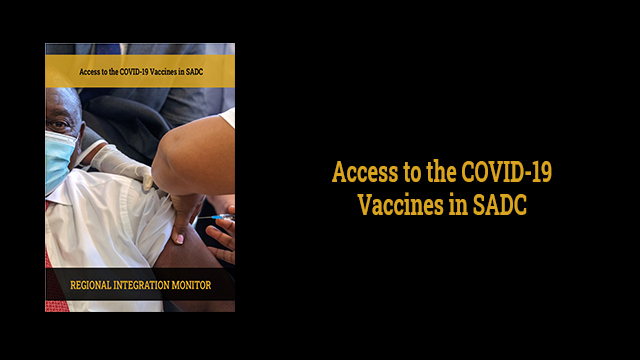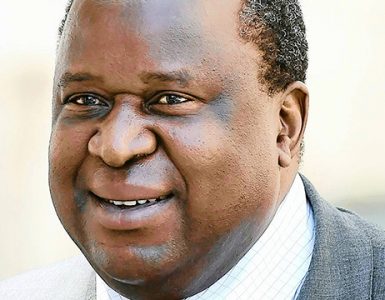Table 1: Summary of COVID-19 Vaccine Roll-out in SADC, as of 15 April 2021[2]
Note: (*) These doses were resold to other African countries.
Since the beginning of the COVID-19 vaccine roll-out in early March 2021, most SADC countries managed to secure their vaccines by exploring bilateral and multilateral partnerships. The COVID-19 COVAX vaccine facility stands out as the main supplier of the vaccines providing most of the vaccine in the region[3]. Mauritius, Namibia and Zimbabwe are countries in the region that have the COVID-19 COVAX vaccines allocated but yet to receive the vaccines. These countries might have exercised their rights to opt-out of the vaccine facility or they might have wished to transfer allocated doses to AMC participants. The other option is that they might have voluntarily delayed receipt of doses and communicated this intent ahead of allocation, or have not met financial requirements.
South Africa sold to other African countries a million doses of its COVID-19 COVAX vaccines due to uncertainty over its safety. The country has been using mostly Johnson & Johnson vaccines. While Zambia’s cabinet has recently approved the use of COVID-19 vaccines, Madagascar and Tanzania are the only countries in the region to show little interest in acquiring the COVID-19 vaccines. COVID-19 Sinopharm vaccines from China and the Covaxin vaccines from India have not yet been approved by the World Health Organization (WHO) for commercial use. However, through bilateral partnerships, doses of these vaccines have been donated and used in Comoros, Zimbabwe, Seychelles, Eswatini, Namibia, Mauritius and Mozambique. Namibia and Comoros have not disclosed the acquired doses of these vaccines.
Access to the vaccine in SADC has proved challenging following three distinct groups created by SADC countries. Group 1 consists of Botswana, Mauritius, Namibia, Seychelles and South Africa that integrate the COVID-19 COVAX facility and can afford to purchase the vaccines by making upfront payments. Group 2 consists of Angola, DRC, Eswatini, Comoros, Lesotho, Malawi, Mozambique, Zambia and Zimbabwe. Countries that integrate the COVID-19 COVAX facility but cannot afford to purchase the vaccines by making upfront payments. They rely mostly on committed purchase arrangements or donation from partners. Group 3 consists of Madagascar and Tanzania, two countries that do not show interest in acquiring the COVID-19 vaccines in the region. The existence of these three groups underlines the problem of a shared vision in the region. As a result, this could undermine efforts towards regional integration and development. The fight against COVID-19 is being tackled at the individual country level and not a region as a whole through an established and well-functioning procurement and distribution strategy.
SADC received 5.7 million doses of the COVID-19 vaccines from various pharmacies corresponding to 1.7% of its estimated population (over 345.2 million)[4]. The level of coverage of the COVID-19 vaccines achieved by the recipient of the vaccines underlines how SADC countries have lagged in the fight against COVID-19[5].
Table 2: Summary of COVID-19 Vaccinations in SADC, as of 15 April 2021[6]
Comoros, DRC, Lesotho, Madagascar, Tanzania and Zambia did not provide updates on COVID-19 vaccinations in particular. This underlines the struggle to implement their contingency plans aimed at addressing effectively the pandemic. More efforts are needed from SADC countries to improve performance concerning the procurement, distribution and vaccination of their population. This will require better planning, organisation, leadership and control of resources. These are major obstacles that SADC countries are called to overcome to access the COVID-19 vaccines and bring the pandemic under control.
Significantly are financial resources. Financing the procurement of vaccines is one of the major obstacles to accessing the COVID-19 vaccines in SADC. In fact, before the COVID-19 resurgent, many SADC countries have been struggling financially[8]. The national debt, slow growth and or economic stagnation, hyperinflation, high unemployment, huge budget deficit have been the characteristics of many SADC countries[9]. Many of them have been receiving financial boost by exploring partnerships. Angola for instance has recently received a disbursement of about USD 487.5 million from IMF under its Extended Fund Facility Arrangement with the country[10].
Except for Botswana, Mauritius, Namibia, Seychelles and South Africa, the majority of SADC countries have demonstrated financial limitations to procure COVID-19 vaccines. Most of the jabs have come to them as donations from bilateral partners (China and India) or committed purchase arrangements through the COVAX facility[11].
Botswana, for instance, is amongst the few countries that made an upfront payment to COVAX securing the needed doses of the COVID-19 vaccines. The South African government has allocated ZAR 19.3 billion (Approx. USD 1.3 billion) to the country’s COVID-19 vaccination programme[12]. The programme includes the procurement and roll-out of COVID-19 vaccines.
Table 3: Summary of COVID-19 COVAX Participation of SADC Countries[13]
Note: (*) Not agreed to public disclosure.
The lack of access to COVID-19 vaccines has exposed the weaknesses of the SADC procurement and distribution strategy. By urging country members to explore partnerships to secure COVID-19 vaccines, SADC exposes its shortcomings as a regional block. Notwithstanding progress with regard to regional integration, failure associated with the procurement mechanism of the COVID-19 vaccines is a setback that should send SADC countries back to the drawing board urging them to work towards redefining a suitable and effective procurement and distribution strategy.
By Ken Ndalamba and Siyaduma Biniza
[1] See Table 1
[2] WHO 2021a. First round of allocation Astra Zeneca/Oxford vaccine, the World Health Organization: Geneva, Available At: https://cdn.who.int/ [Last Accessed: 21 March 2021]; WHO 2021b. New dawn for Botswana’s COVID-19 response, on the World Health Organization Website, viewed on 04 April 2021, from https://www.afro.who.int/; WHO 2021c. Eswatini launches nationwide COVID-19 vaccination campaign, on the World Health Organization Website, viewed on 04 April 2021, from https://www.afro.who.int/; GoSA 2021. COVID-19 Coronavirus vaccine, on the Government of South Africa Website, viewed on 04 April 2021, from https://www.gov.za/; GAVI 2021. Covax Vaccine Roll-Out: Country Updates, on the Global Alliance for Vaccines and Immunisation Website, viewed on 15 April 2021, from https://www.gavi.org/
[3] GAVI 2021. Covax Vaccine Roll-Out: Country Updates, supra.
[4] OUR WORLD IN DATA 2021. Coronavirus (COVID-19) Vaccinations, on the Our World in Data Website, viewed on 15 April 2021, from https://github.com/; https://github.com/; https://github.com/; https://github.com/; https://github.com/; https://github.com/; https://github.com; https://github.com/; https://github.com/
[5] See Table 2
[6] WHO 2021a. First round of allocation Astra Zeneca/Oxford vaccine, supra; WHO 2021b. New dawn for Botswana’s COVID-19 response, supra; WHO 2021c. Eswatini launches nationwide COVID-19 vaccination campaign, supra; GoSA 2021. COVID-19 Coronavirus vaccine, supra.
[7] SADC 2018. SADC Selected Economic and Social Indicators, 2018, Southern African Development Community: Gaborone. Available At: https://www.sadc.int/ [Last Accessed 16 March 2021].
[8] CABRI 2019. Programme-based budgeting: The rollout of complex reform in Africa, on the Collaborative Africa Budget Reform Initiative Website, viewed on 16 March 2021, from https://www.cabri-sbo.org/
[9] CABRI 2019. Programme-based budgeting: The rollout of complex reform in Africa, supra.
[10] IMF 2021. IMF Executive Board Completes Fourth Review of the Extended Fund Facility Arrangement for Angola, and Approves US$ 487.5 Million Disbursement, on the International Monetary Fund Website, viewed on 07 April 2021, from https://www.imf.org/
[11] See Table 3
[12] GoSA 2021. The Budget Review, Government of South Africa: Pretoria. Available At: http://www.treasury.gov.za/ [Last Accessed: 12 April 2021].
[13] WHO 2020. 172 countries and multiple candidate vaccines engaged in COVID-19 vaccine Global Access Facility, on the World Health Organization Website, viewed on 07 April 2021, from https://www.who.int/






























